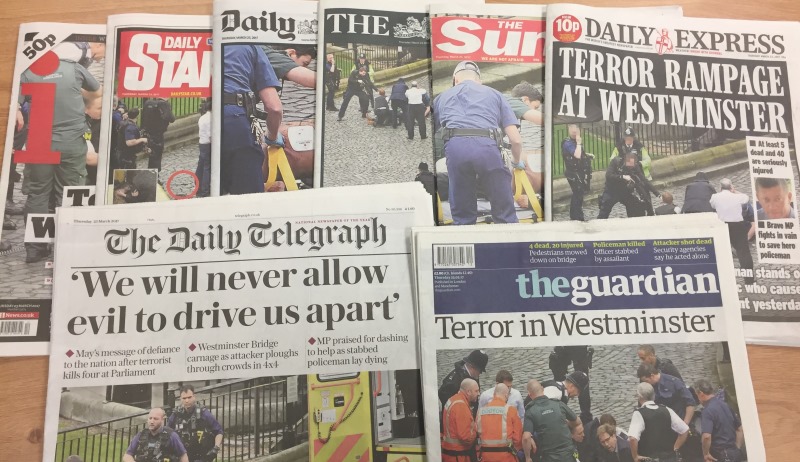The ethics behind the coverage of Westminster’s terrorist attack
The thirst to be first. Possibly the most deadly condition any of us journalists get, writes Andrew Greaves, head of journalism at News Associates.
When a news story like the horrific events at Westminster breaks, our natural reaction is to want to push the story on, to provide our readers/viewers/listeners with new snippets, new insights and new information.
But what happens when that information turns out to be wrong?
 Rather embarrassingly we found out as Channel 4 named the wrong man as responsible for the carnage along Westminster Bridge and outside the Houses of Parliament.
Rather embarrassingly we found out as Channel 4 named the wrong man as responsible for the carnage along Westminster Bridge and outside the Houses of Parliament.
Having announced Abu Izzadeen as the suspect, the programme’s senior home affairs correspondent Simon Israel then appeared back on screen to say that he now had doubts over the information he’d been given.
The show ended with anchor Jon Snow, looking suitably embarrassed, announcing that the programme had been contact by Izzadeen’s brother who had confirmed he was still in prison and could not have been responsible.
(Channel 4 News’ editor Ben de Pear has since released a statement apologising for the error)
Setting aside the information being wrong, let’s look at some context.
Israel is a vastly experienced reporter with a network of contacts that he, like all of us, will have grown to trust.
He was given a name by one of those sources and had no reason to believe the information he was given was incorrect.
The bosses at Channel 4 sensed they could – during a live broadcast – break some news they thought to be true.
How many of us could honestly, hand on heart, say they wouldn’t have done something similar in that situation?
The world we live in today, one of rolling 24-hour news coverage and social media, means being fast and first with the latest news is a matter of reputation.
But we should always have the old adage of a reputation taking a lifetime to build and seconds to ruin ringing in our ears when we make these decisions.
Channel 4 News wasn’t the only outlet to raise some ethical concerns for our trainees.
Reuters, less than an hour after the attack happened, featured a number of pictures on its social media feeds of some of the victims.
Two images in particular have stuck with me and caused me the most concern.
The first depicted a man laid prone on the ground at the bottom of some steps, his head area surrounded by blood and his leg badly broken.
The other showed a terrified woman, again in a pool of blood, looking towards the camera as another woman tried to hold her on a pavement scattered with postcards from a nearby stand.
The first image did not show the man’s face but his clothes were probably distinctive enough for a relative to identify him – an ethical conundrum in itself – while the second shot clearly showed the shock-stricken face of the injured woman.
Both these would, to my mind, breach the clauses of the Independent Press Standards Organisation’s editors code on privacy and intrusion into grief/shock, not to mention possibly the moral code of decency.
IPSO, the press regulator, only covers those publications which subscribe to it so strictly speaking Reuters – a news and picture agency – are not covered by its editor’s code but the majority of the UK papers which chose to use those images will be.
Analysing the national newspapers with our trainees, it was obvious that all the papers took different decisions.
Some published the pictures but pixelated the faces, others used uncensored versions. A couple of titles pixelated not only the faces but the blood surrounding the bodies.
Even looking at the difference between the treatment of the images online and in print threw up all sorts of questions.
The Sun, as an example, used the Reuters picture of the woman mentioned above online yesterday but blurred out her face, yet used the full uncensored shot in this morning’s print edition.
What’s the right thing to do? I guess we’ll all have a different answer and I think the majority of journalists may have a view at odds with their readers.
It certainly caused much debate in our newsrooms this morning and I’m sure the debate won’t go away.
Ethics and accuracy have to be at the very heart of everything we do as journalists but sometimes news isn’t a pretty industry and we shouldn’t be afraid to shine a light on it.


